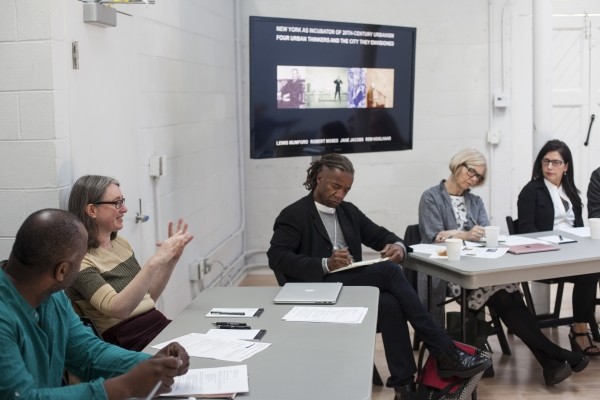
Faculty and practitioners from across the country gather to share insights, look ahead
CHICAGO–(ENEWSPF)–August 8, 2017
By: Andrew Bauld
Across the University of Chicago campus, researchers from a variety of disciplines are engaged in thinking about urban design and architecture and its future on campus.
Along with UChicago Urban, Bill Brown, senior adviser to the Provost for Arts, and Christine Mehring, chair and professor of Art History, invited leading scholars and practitioners of architecture and design for a pair of workshops this past spring entitled “Designing Urbanism.” They met to gather insights on the current state of the field and to imagine what may lie ahead for UChicago.
“For the time being, what we’re interested in doing is making sure that design imagination becomes part of the intellectual culture of the University,” said Brown, the Karla Scherer Distinguished Service Professor in American Culture. “We’re not interested in having an accredited school, or a design program at the moment, we’re just trying to figure out how we can integrate design pedagogy and thinking into the fabric of the institution.”
The workshops were supported by funding from the Big Idea Generator, and allowed the committee to invite an array of experts in the field, including famed Chicago architect Jeanne Gang, Neil Brenner of the Harvard Graduate School of Design, landscape architect Walter Hood of the University of California, Berkeley, and architecture and urban design scholar Dana Cuff of the University of California, Los Angeles.
Both workshops were marked by a sense of excitement over the possibilities, including discussions around the potential development of a design program at UChicago that could span disciplines and invite collaboration, especially from the arts.
“One of the things that is exciting is most urban planning comes from architecture or urban planning, and this could come from an art context, which is really exciting and challenging,” said Cuff. “There are good schools in Chicago, but the University of Chicago and its intellectual status is exactly the right site for thinking about urban design practices and education.”
The workshops build on a growing interest at UChicago when it comes to thinking about urban design and architecture. The University in recent years added a minor in architectural studies in the College and will host a Mellon Foundation Sawyer Seminar during the upcoming academic year to discuss how art contributes to the formation and transformation of urban spaces.
Setting the stage for the future
The University will also be hosting events, exhibitions and programs as part of the 2017 Chicago Architecture Biennial, including a commission from Ogrydziak Prillinger Architects in San Francisco, to commemorate the 75th anniversary of the first controlled, self-sustaining chain reaction.
And in 2018, the new Mansueto Institute for Urban Innovation will launch, serving as a central space on campus to address the opportunities and challenges facing cities around the world.
Mehring said that all of these events will hopefully lay the seeds for the eventual formation of an urban architecture and design program at the University.
“This is really about bringing scientists, social scientists, humanists, artists and other practitioners together to explore what a program would look like at UChicago,” said Mehring, the co-chair of the University’s Urban Architecture and Design Committee. “We need something to hold people together and ensure these connections and conversations continue, and allow for ambitious opportunities that might not otherwise be possible.”
Both the workshops and the subsequent design events throughout the year are setting the stage for critical discussions about what the University’s role in that design will look like in the future.
“We know we’re in a city that is in the midst of changing dramatically, and it certainly seems the University should contribute to thinking about such change by focusing attention on urban design,” Brown said.
Source: http://uchicago.edu








